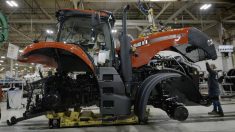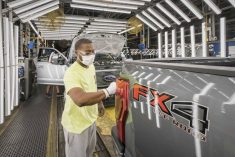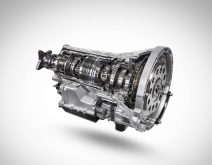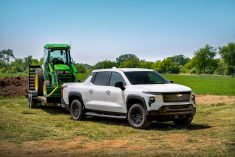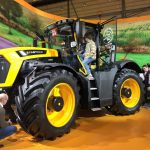As more discussion in the automotive world centres on electric drivetrains, potential Canadian buyers tend to ask one question more than others: how will electric vehicles perform in the dead of a brutal Prairie winter?
To help convince potential buyers its all-electric F-150 Lightning is a capable all-season vehicle, Ford sent six of them, along with a team of engineers, to Alaska this past winter. The tests were conducted in temperatures as low as -34 C.
Of course, they could have saved some travel time from Detroit, Mich., and just stopped off in Winnipeg, Man., instead for the same kind of brutal weather.
Read Also

Claas brings 1000 Series SP forage harvesters to Canada
In mid-August, Claas unveiled its new line of Jaguar forage harvesters at an event in Visalia, California, deep in the heart of that state’s dairy region.
When testing these trucks, there is more for engineers to consider than just how well batteries will retain energy in the cold. With a new type of driveline, there are other considerations that need to be evaluated as well.
“Alaska provides us the extremely cold temperatures, snow and ice-covered surfaces we need to push the F-150 Lightning in this type of testing, which is really focused on dialing in to how the truck delivers its power to the ground on slippery surfaces,” said Cameron Dillon, F-150 Lightning powertrain engineer. “Customers may not regularly see -34-degree-Celsius mornings like we are seeing here, but they will see winter cold, snow and icy roads, and they should feel confident their F-150 Lightning is ready for all of it.”
Engineers call this type of evaluation low-mu testing, which looks at how the all-electric powertrain adjusts power delivery to the wheels on low-traction surfaces.
The Ford engineers put their pre-production trucks through their paces on various surfaces, including loose snow, compact snow and ice-covered concrete surfaces among others in the extreme temperatures. The F-150 Lightning pickup can sense wheel slip and adjust power to the wheels within milliseconds, benefiting from the quick responses of the all-electric powertrain.
“F-150 Lightning in the snow is a very different ball game compared with gas vehicles,” said Nick Harris, F-150 Lightning powertrain engineer. “The responses are extremely quick and the dual motors make it as if you have two engines pumping out power in one vehicle. A lot of our work is to co-ordinate the two motors to work together to best deliver torque to the ground so that customers who drive in the snow and ice ultimately feel very confident.”
The F-150 Lightnings use standard dual front and rear motors along with full-time four-wheel drive, and they have standard electronic-locking rear differentials for improved traction. Ford says the trucks have selectable drive modes as well. Combine that with the fact electric motors can deliver very high torque at low r.p.m. much more quickly than conventional internal combustion engines, and these trucks should be capable machines in all types of road conditions — once engineers get the performance characteristics dialed in.
Ford said engineers were able to adjust the driveline calibration in real time while testing, helping to maximize efficiency during the 12-hour test days. In addition to Alaska, the F-150 Lightning powertrain team has conducted low-mu testing in several areas in Michigan.
Ford will begin delivering the first F-150 Lightnings to dealers later this spring.




